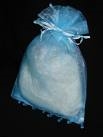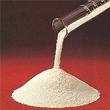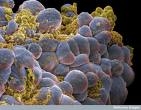| Home > 5. Sodium Bicarbonate Injection > 5.3 Injection for Remediation of Acid |
 Previous Next Previous Next  |
|
|
|
Alkaline Injection - Precipitate behavior in porous.
 Salt SaltTo a flask is charged 39.5 parts (0.1 moles) of a 42% aqueous solution of the sodium salt of 2-acrylamido-2- methylpropanesulfonic acid, 300 parts water, 0.1 part hydroquinone monomethoxy ether inhibitor and 12.9 parts (0.05 moles) of Duomeen C? The mixture is warmed to 95? C. [1]
Once the acid and bicarbonate salt become exposed to water, a frothing reaction will take place and the vegetation will be thoroughly covered with the compound. It is not necessary to saturate the affected area, but simply to moisten the affected area to improve surface adhesion of the compound. [2]
The ions in a solid salt are usually arranged in a definite crystalline structure, each positive ion being associated with a fixed number of negative ions, and vice versa. [3]
 Mineral Production Mineral ProductionThe dominant primary minerals subject to chemical weathering are plagioclase (Pl) and biotite (in granite) or Pl and chlorite (in metasediment). [12]
Approximately 90% of the picric acid was mineralized within 60 min of reaction, as indicated by the reduction in TOC levels. The optimum pH for the removal of TOC with a one-step addition of Fenton's reagent was pH 2–3 under ambient laboratory temperatures. [13]
After the mill was shut down in June 1963, SWI shipped uranium ore from company mines and ore purchased from independent miners to the Federal- American Partners' uranium mill in the Gas Hills district. The AEC continued until July 1965 to purchase the uranium concentrate produced under the SWI- Federal toll- milling arrangement. [14]
 Alkaline Treatment Alkaline TreatmentA new passive treatment technique is a vertical flow wetland or successive alkalinity producing system (SAPS). Four SAPS in Pennsylvania were studied to determine changes in water chemistry from inflow to outflow.[28]
More specifically, the invention relates to a method of remediation of subsurface material through use of a suspension of alkaline solid material. More specifically, the invention relates to a method of adjusting the pH of subsurface material to a value which enhances remediation. [29]
VFRs overcome the alkalinity producing limitations of ALDs and require much less area than constructed wetlands. A VFR consists of one underground treatment cell, which is lined with a limestone base. [30]
 Cancer Growth Cancer GrowthThus, it has become increasingly important to determine in situ reactions of EM fungal communities to soil modifications that could inhibit plant growth. [32]
Laboratory-scale microcosms were set up to trial different amendments such as the addition of bicarbonate, ethanol, and molasses as well as heating and retention time to promote the growth of the metal-reducing and sulfate- reducing bacteria identified. This work will be followed by pilot-scale trials in small bioreactors on site leading to improvements to the full scale bioreactors. [33]
To promote microbial growth, a pH range should be near neutral though ranges between about 5 to about 9 following emplacement of the gel within the soil system can be used. To raise the pH, a buffer such as sodium bicarbonate, phosphates, sodium hydroxide or a combination thereof can be used in the water phase of the gel.[34]
 Treatment TreatmentThe conventional approach to this type of contamination has been to use pump-and-treat systems that bring the groundwater above ground for treatment. [35]
Because chemical treatment is so expensive, biological alternatives are currently being researched and implemented. The use of built wetlands, a method developed by the Department of Interior's Bureau of Mines, precipitates metals and neutralizes acidity through biological activity (Perry 1992). [36]
Acid treatment of iron filings significantly enhanced the reduction rate of perchlorate, and the reduction rate was correlated reasonably well by pseudofirst-order reaction kinetics. A linear correlation relating the reaction rate constant to the square of iron dosage was developed which predicted reasonably well the performance of flow through experiments. [37]
|
|
|
|

